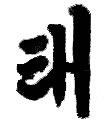about taekwon-do
Taekwon-Do traces its roots back more than two thousand years. The various schools (systems) of Korean martial arts, known as Kwans, were passed down from master to student through the generations. In 1955, General Choi, Hong Hi championed the effort, together with other Korean martial arts masters, to consolidate many of the Kwans under a unified system which they named Taekwon-Do. General Choi became known as the father of Taekwon-Do.
About Grandmaster Kwon, Jae-Hwa:




Grandmaster Kwon, Jae-Hwa
In the Bronx with Master Luciano.


... the art of Taekwon-Do
The interpretation and teaching of Taekwon-Do encompass a wide variety of offensive and defensive techniques. Its practice includes the use of all parts of the hand and arm as well as all parts of the foot and leg.During training, special careful attention is paid to ensure the gradual and equal development of every part of body. Literally, Taekwon-Do means "The Way or Path of the Foot and Hand".


TAE: This syllable stands for all foot techniques to include blocks, jumps, strikes and thrusts. Every possible usage of the leg is included in "TAE".
KWON: The symbol for fist. It represents all strikes or thrusts with the hand. The offensive absorption or blocks with the hand and arm are also "KWON".
DO: The "Way or Path" is the same as that mentioned in the fundamental Philosophy of other Asian Martial Arts. "DO" is an intrinsic Spiritual awareness that should be integrated into ones' way of life. "Do" represents all things which lead to maturing, to success and to learning experiences, also outside the realm of sport.
THE KOREAN ART OF SELF-DEFENSE
The techniques learned in the Hyongs (forms) are put to use. One learns to use his opponent's timing when free sparring. Free sparring develops self-control, speed, and an indomitable spirit in the student.In Taekwon-Do, one does not free spar until he has mastered the basic blocking techniques and has learned some degree of focus and control. Postponing this part of the student's training reduces the chance of injuries.Since there is no contact made in Tae Ryon, the students are expected to stop their attack just short of hitting their opponent. This controlled free fighting develops focus and sportsmanship. Friendship and mutual respect is evident in the schools of Taekwon-Do since the students view their peers as friends trying to help each other improve rather than viewing each other as adversaries who are just interested in themselves.
KYEK PA (Power & Breaking Tests)
Since there is no contact in Hyongs orTae Ryon, power tests show the student and the observer the power inthe techniques of Taekwon-Do. Breaking tests develop power and focus. Conditioning of the hands and feet are essential in this part of Taekwon-Do. The most important aspect of Kyek Pa is the confidence the student acquires in his techniques. If the execution of the technique is not perfect, the student becomes painfully aware that his execution is not what it should be and needs to be improved.
HOSINSUL (Self-Defense)
The self-defense facet of Taekwon-Do deals with ways to disarm an opponent and ways of breaking out of holds. Throwing and grabbing techniques are also taught during this part of Taekwon-Do. Self-defense techniques may be used when one does not wish to hurt or disable an opponent but to merely get away from or to subdue the opponent.One-step and two-step sparring are primary ways of practicing self defense techniques. That is, when one's partner attacks with one or two(possibly prearranged) techniques and the defender blocks the attack and counters with a technique of his own.

